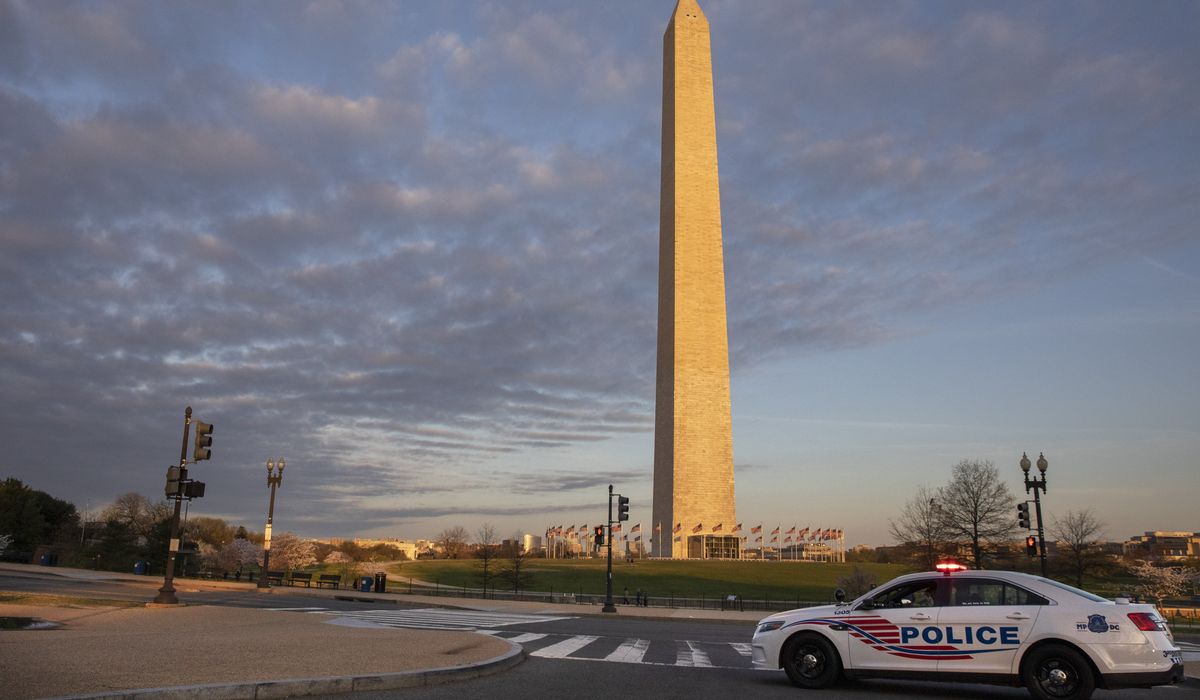


It happens in a flash.
One minute, District of Columbia motorists are checking their phone at a red light or parking on a residential street. The next moment, they have gun-toting carjackers demanding their keys —- or their life.
This year’s record-high number of violent car thefts have spared no part of the nation’s capital, with congressmen being held up in swanky neighborhoods just as working-class families are victimized in more crime-prone areas.
It’s left D.C. police on the defensive as they try to rein in the rampant and unpredictable carjackings.
“Unfortunately, it’s pretty widespread. We don’t have a specific area where they’re occurring,” Carlos Heraud, the assistant chief of Investigate Service Bureaus, told The Washington Times.
Metropolitan Police have recorded 757 carjackings so far in 2023 — more than double last year’s 360 that were documented through Tuesday. This year’s total also shatters the end-of-year total of 484 incidents in 2022, which was itself a record-high for the city at the time.
Every police district in the city has seen dramatic increases, from the more suburban 2nd District that covers Van Ness in Northwest (up 175%) to the 6th District that sits east of the Anacostia River (up 193%).
The carjacking of Rep. Henry Cuellar, Texas Democrat, outside his Navy Yard apartment building Monday was one of the most high-profile thefts of the year.
The congressman said three young males wearing masks ran up on him with guns drawn and demanded his white Toyota Crossover.
Mr. Cuellar calmly complied and let the crooks take his ride, along with his phone and luggage. The car and the rest of his belongings were recovered in the Barry Farm neighborhood in Southeast less than two hours later.
The congressman has been light-hearted when recounting the incident — such as mentioning his black belt in karate and that he was more disappointed about losing his sushi in the car — but he also acknowledges that public safety in the District has hit a low point.
“When you look at the numbers of murders, rapes [and] assaults at the border — let’s say [in] Laredo, Texas — I’ve always said that Washington’s about two or three times more dangerous, and we certainly see it now,” Mr. Cuellar said Tuesday night on Fox News.
Chief Heraud dismissed concerns that carjackings were becoming more common in Navy Yard, which is the area surrounding the Washington Nationals ballpark in Southeast.
“No, I don’t think Navy Yard has seen a greater increase than any other particular neighborhood in the city,” he said.
The manner in which the Texas Democrat was carjacked fits a familiar pattern in the District.
Chief Heraud said perpetrators often roam around in a previously stolen car when they target someone either idling at a stop light or by a curb.
The thieves then pull up, aim their guns at the victim and coerce them to hand over their keys.
But authorities still don’t know why there has been an explosion in carjackings over the past three-plus years. The chief told The Times that most carjacking suspects exercise their right to remain silent — and anecdotally, he said many of those arrested are typically first-time criminal offenders.
He believes that figuring out what motivates young people to go through with such a violent crime will help police in preventing the brazen car thefts.
“I really think if we can identify the ‘why,’ especially amongst the juveniles, we might be able to change our approach on how to slow this down,” Chief Heraud said.
Some researchers say the spike in the violent thefts was one of the unforeseen consequences of the COVID-19 pandemic.
Bruce Jacobs, a criminologist at the University of Texas at Dallas, said the closure of schools gave many teens more free time. Add in the closure of businesses, and young people with a criminal itch to shoplift or burglarize stores began looking to steal cars.
There was only one problem: most new cars are too high-tech to be broken into non-violently.
Mr. Jacobs said proximity readers, electronic keys and sophisticated alarms have all made it more difficult to finagle a lock and hot wire a car — equipment that’s not part of the older model Hyundais and Kias that have been badgered by auto thefts across the country.
So the teens and 20-somethings who commit 75% of all armed car stick-ups nationwide use their street connections to procure a gun instead. It’s why major cities such as Chicago, Minneapolis and Philadelphia have all suffered from the same surge in carjackings that the District is going through.
“Carjackings are a lot easier,” he told The Times. “Stick a gun in somebody’s face, demand their vehicle, they get out, you get in, it’s over. Within a minute, you have exactly what you want.”
Despite offenders often being legal minors and so few carjackings turning deadly, Mr. Jacobs said all the carjackers he’s interviewed share a “stomach for violence.” It’s why he commented that Mr. Cuellar handled his hold-up perfectly earlier in the week by peacefully handing over his keys.
The relative ease of a carjacking is complemented by how useful the crime is to thieves.
Crooks can strip the car for parts and make some cash. They can use the car to help them commit other crimes. Or they can flaunt their stolen goods on social media without creating more harm the way an assault or a shooting would.
“For some of these offenders, it’s a game of one-upmanship,” Mr. Jacobs said. “It’s about street credibility. It’s about bragging rights. It’s about showing…how much of a bada— you are. And I think carjacking can really do that in no uncertain terms.”
D.C. police have recorded 10 carjackings just three days into October.
Authorities urge people to be aware of their surroundings at all times, particularly when stopped at traffic lights and when parking in neighborhoods.
• Matt Delaney can be reached at mdelaney@washingtontimes.com.
